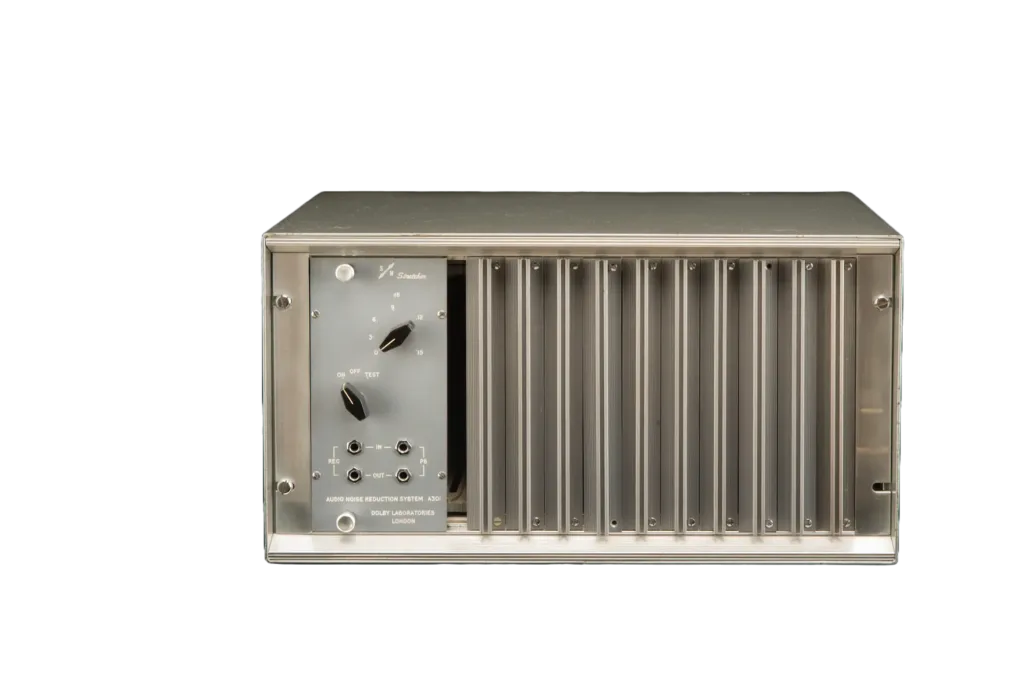Hi-Fi Hall of Fame
People Inductee
Dr. Ray Dolby

Introduction
Ray Dolby was an American inventor and engineer who made significant contributions to the field of audio engineering. He is best known for developing the Dolby noise reduction system, which revolutionized the way sound was recorded and played back in the entertainment industry.
Ray Milton Dolby was born on January 18, 1933, in Portland, Oregon, to Earl and Esther Dolby. His father was a salesman, and his mother was a homemaker. Ray Dolby was interested in science and technology from a young age and showed an aptitude for mathematics and physics. He attended public schools in California and was admitted to Stanford University in 1949.
As a teenager, Dolby worked at Ampex Data Systems where he worked on some of the earliest audio and video tape recorders, including the Ampex Quadruplex video recorder.
At Stanford, Dolby studied electrical engineering and developed an interest in sound and acoustics. He completed his undergraduate degree in 1957 and went on to earn a Ph.D. in physics from Cambridge University in England in 1961.
After completing his studies, Dolby began his professional career in the audio industry. In 1965, he founded Dolby Laboratories in London, which would become one of the most significant companies in the history of audio engineering. He would spend his long and distinguished career developing new technologies there.

Key Facts
| Name | Ray Dolby |
| Category | Innovator and Business Leader |
| Born | January 18, 1933 |
| Died | September 12, 2013 (aged 80 years) |
| Key Technologies | Dolby Noise Reduction Dolby Surround Dolby Digital Dolby Atmos |
| Companies Founded | Dolby Laboratories www.dolby.com |
| Inducted into the Hi-Fi Hall of Fame | March 2023 |
Technologies
Ray Dolby founded Dolby Laboratories at a time when audio systems used analog technologies – the emergence of digital technologies was still at least a decade in the future. In analog systems, one of the main problems was the presence of unwanted noise. This noise could be caused by the equipment used to record the sound, as well as by external factors such as background noise or interference.
Ray Dolby set out to solve this problem by developing a noise reduction system that could remove unwanted noise from sound recordings. He based his system on a technique called “companding”, which involves compressing the sound during recording and expanding it during playback. This process helps to reduce the noise present in the recording without affecting the overall quality of the sound.
The first Dolby noise reduction system, called Dolby “Type A”, was introduced in 1965 and was quickly adopted by the recording industry. Dolby A employed large, expensive companders that only professionals could afford to use.

This was followed by the Dolby “Type B” system in 1968, which offered even greater noise reduction. Dolby Type B was also less expensive to implement, making it ideal for consumer audio tape recorders, and manufacturers quickly adopted the new technology into their audio products. These systems revolutionized the way sound was recorded and played back. Audiophiles added open reel and cassette tape recorders to their Hi-Fi systems.

Ray Dolby’s key patent was United States Patent 3,631,365 for a “Frequency selective, symmetric signal compressor/expander”, which was the essential patent for Dolby noise reduction. The patent application was filed October 20,1969, and the patent granted December 28, 1971.
Here’s a link if you’d like to see the original patent: https://patents.google.com/patent/US3631365A/en

By the 1980s, digital technology had started to replace analog. Ray Dolby turned his engineering talents to the digital domain and continued to innovate in the audio industry. He developed technologies such as Dolby Surround Sound and Dolby Digital. Dolby Surround Sound, introduced in 1982, enabled the creation of a more immersive audio experience for moviegoers. Dolby Digital, introduced in 1991, made it possible to deliver high-quality digital audio in movie theaters and on home video formats.
Impact
Ray Dolby’s contributions to the audio industry were recognized with numerous awards and honors throughout his career. He was elected to the National Academy of Engineering in 1987 and was awarded the National Medal of Technology and Innovation by President Bill Clinton in 1997. He was also inducted into the Consumer Electronics Hall of Fame and the National Inventors Hall of Fame.

Ray Dolby remained active in the audio industry until his death in 2013 at the age of 80. He was a passionate advocate for the importance of high-quality sound in the entertainment industry and was committed to ensuring that his company continued to innovate and push the boundaries of audio technology. Today, Dolby Laboratories is a global leader in audio technology, and its products are used in everything from movie theaters and recording studios to home theaters and mobile devices.

If you’d like to see what Dolby Laboratories is doing now, please check out the company website: https://www.dolby.com
Induction to the Hi-Fi Hall of Fame
Ray Dolby was a remarkable innovator and business leader who made significant contributions to the audio industry. His development of the Dolby noise reduction system revolutionized the way sound was recorded and played back, and his subsequent innovations in audio technology have continued to shape the industry to this day. For his many contributions, Ray Dolby is inducted into the Hi-Fi Hall of Fame.
